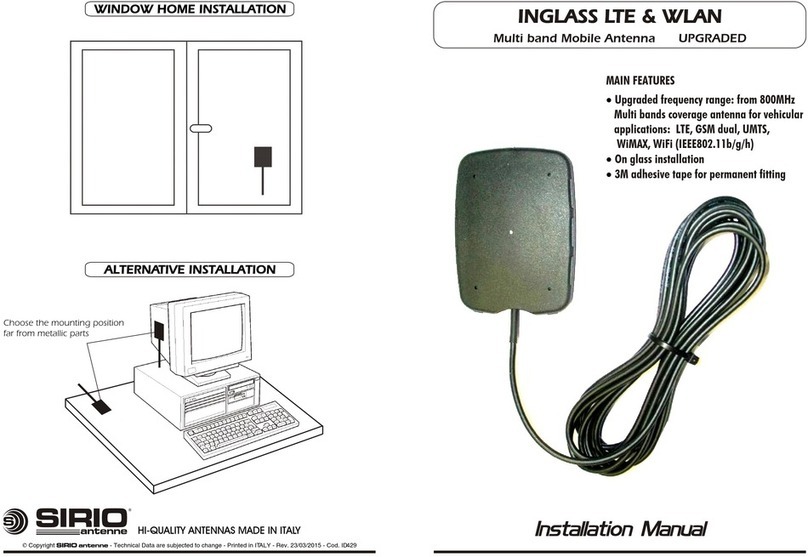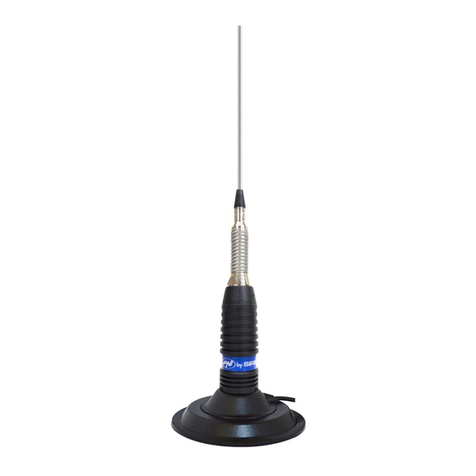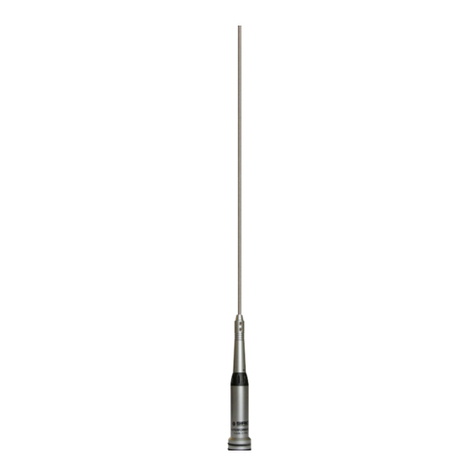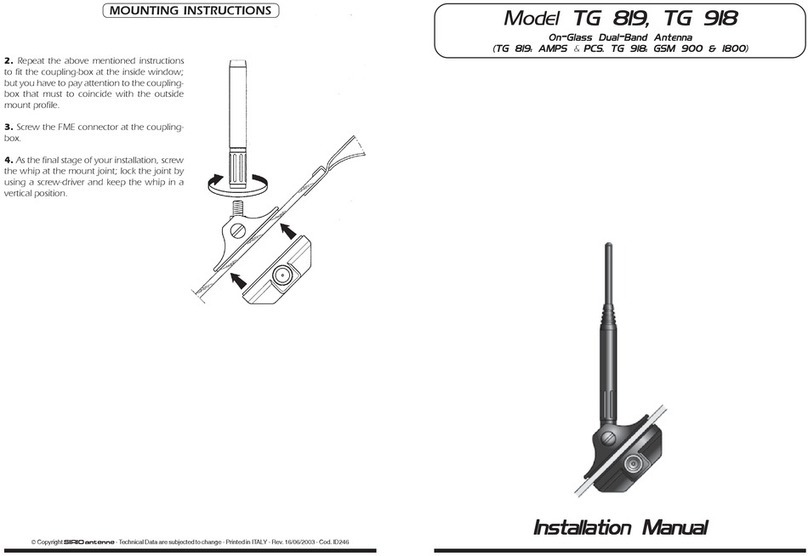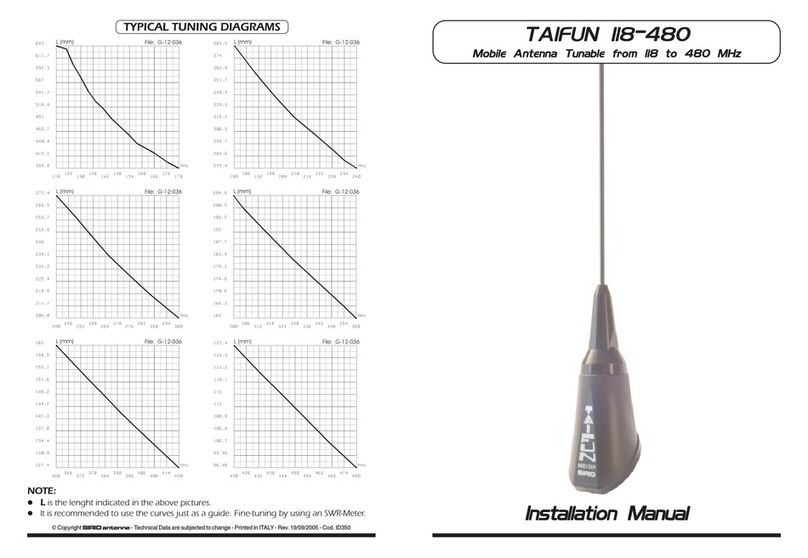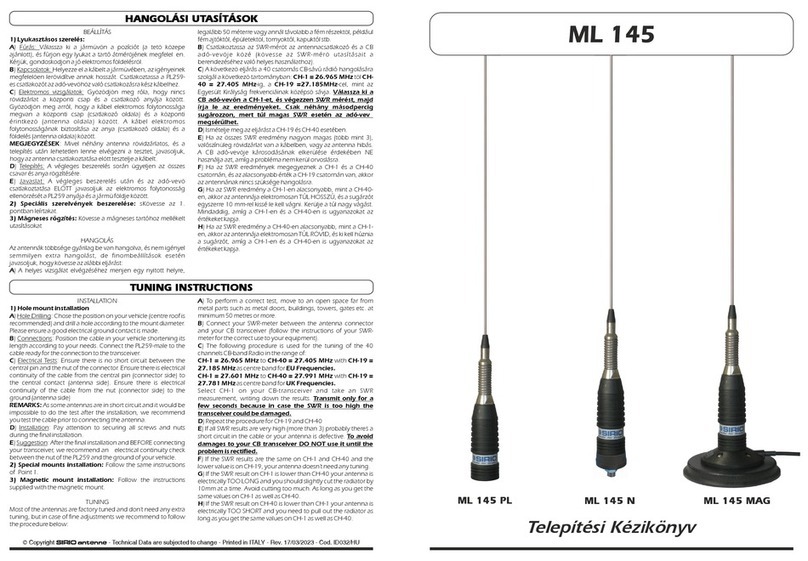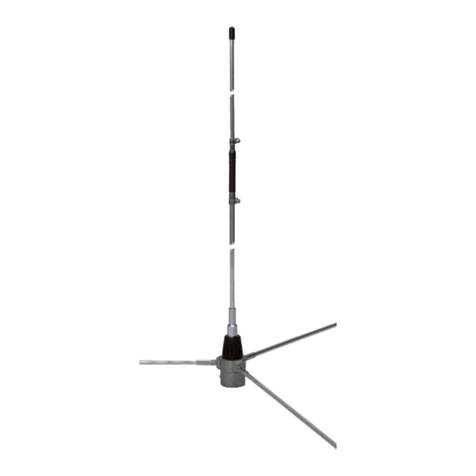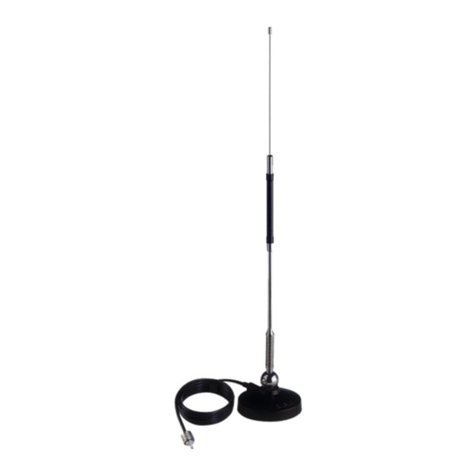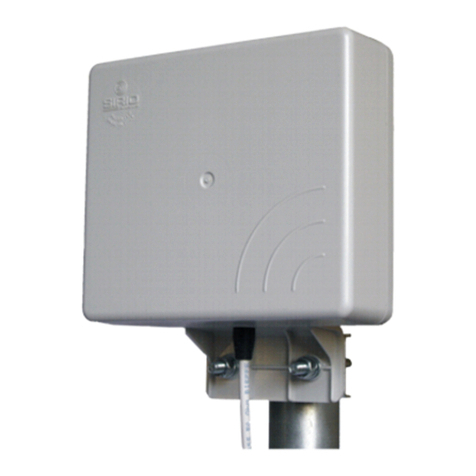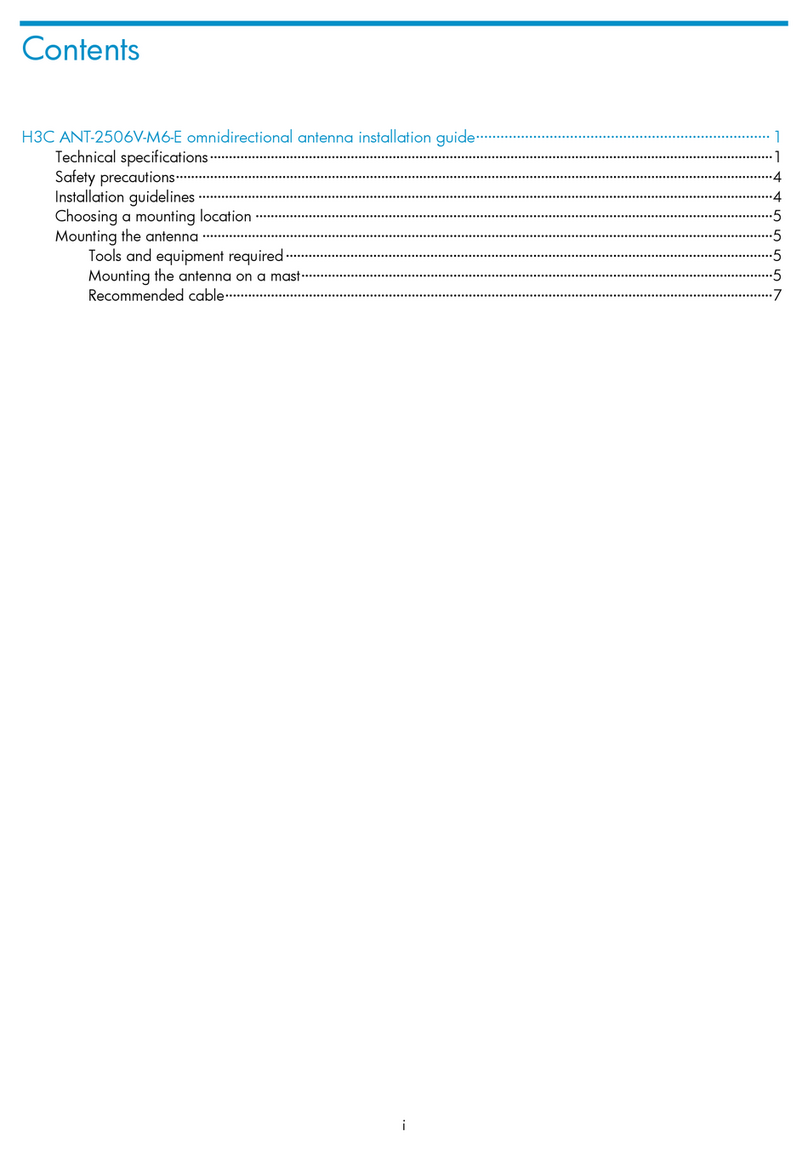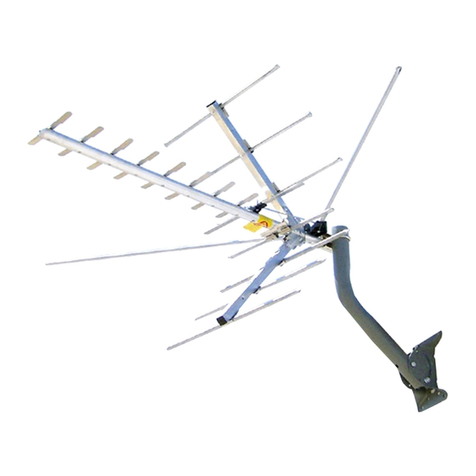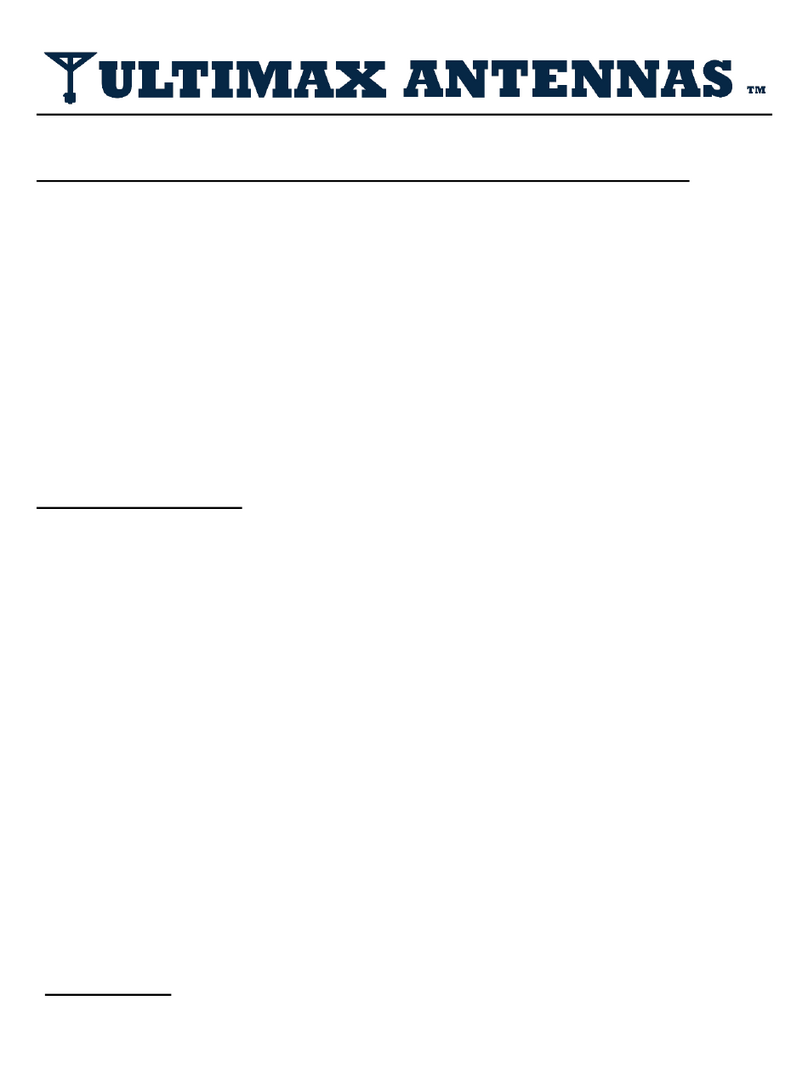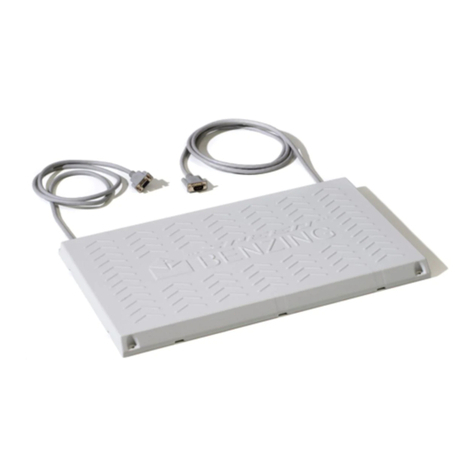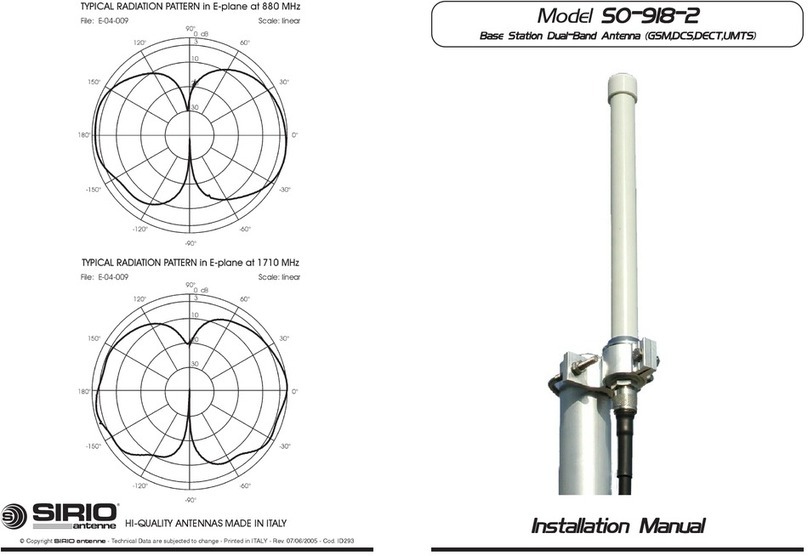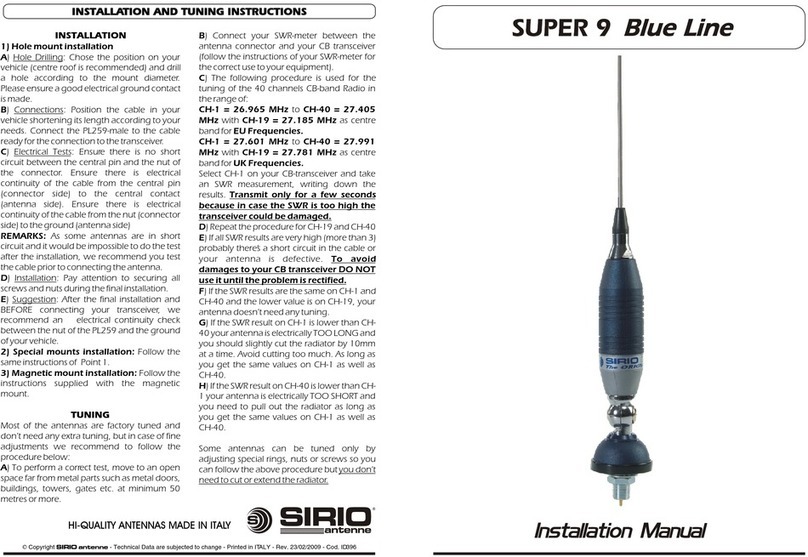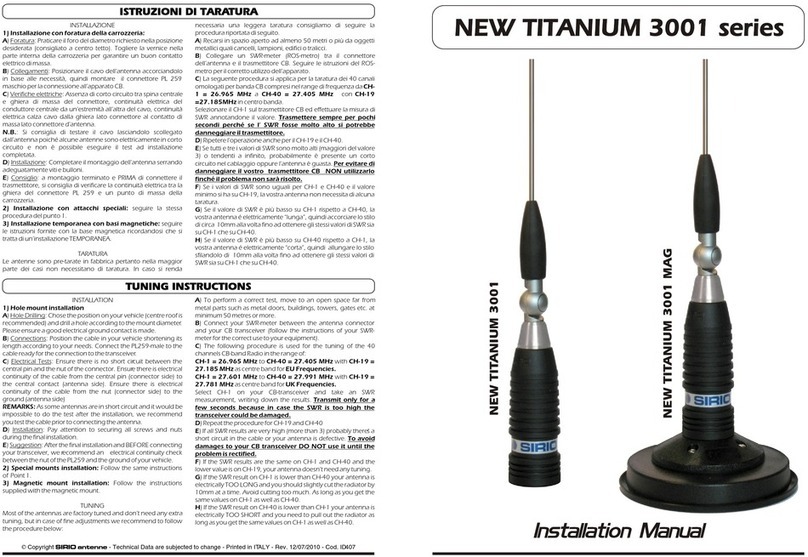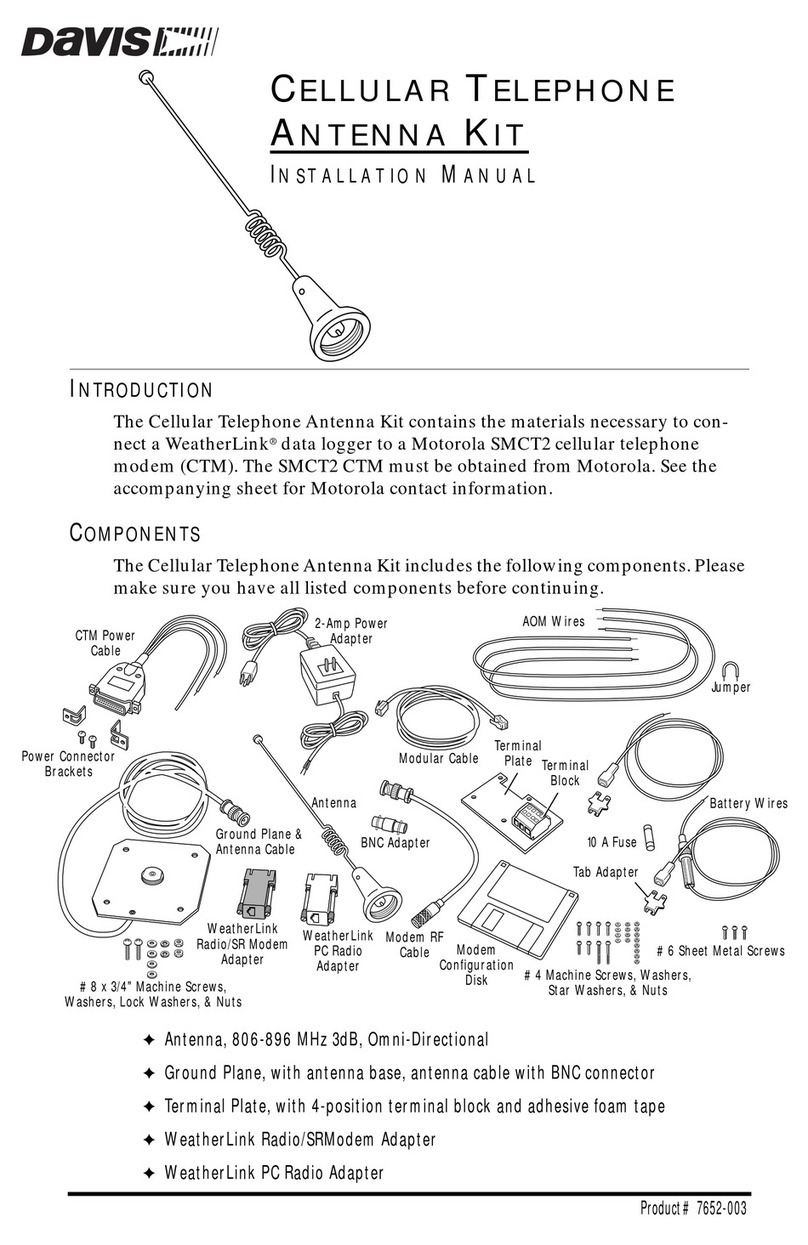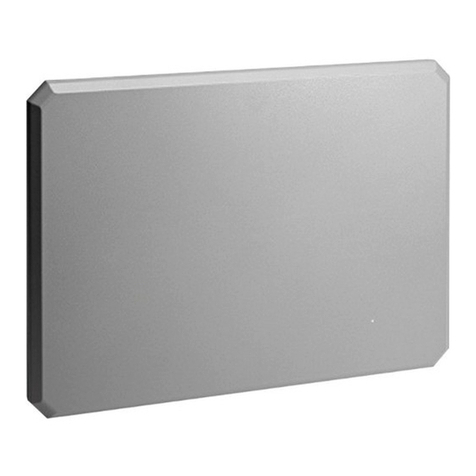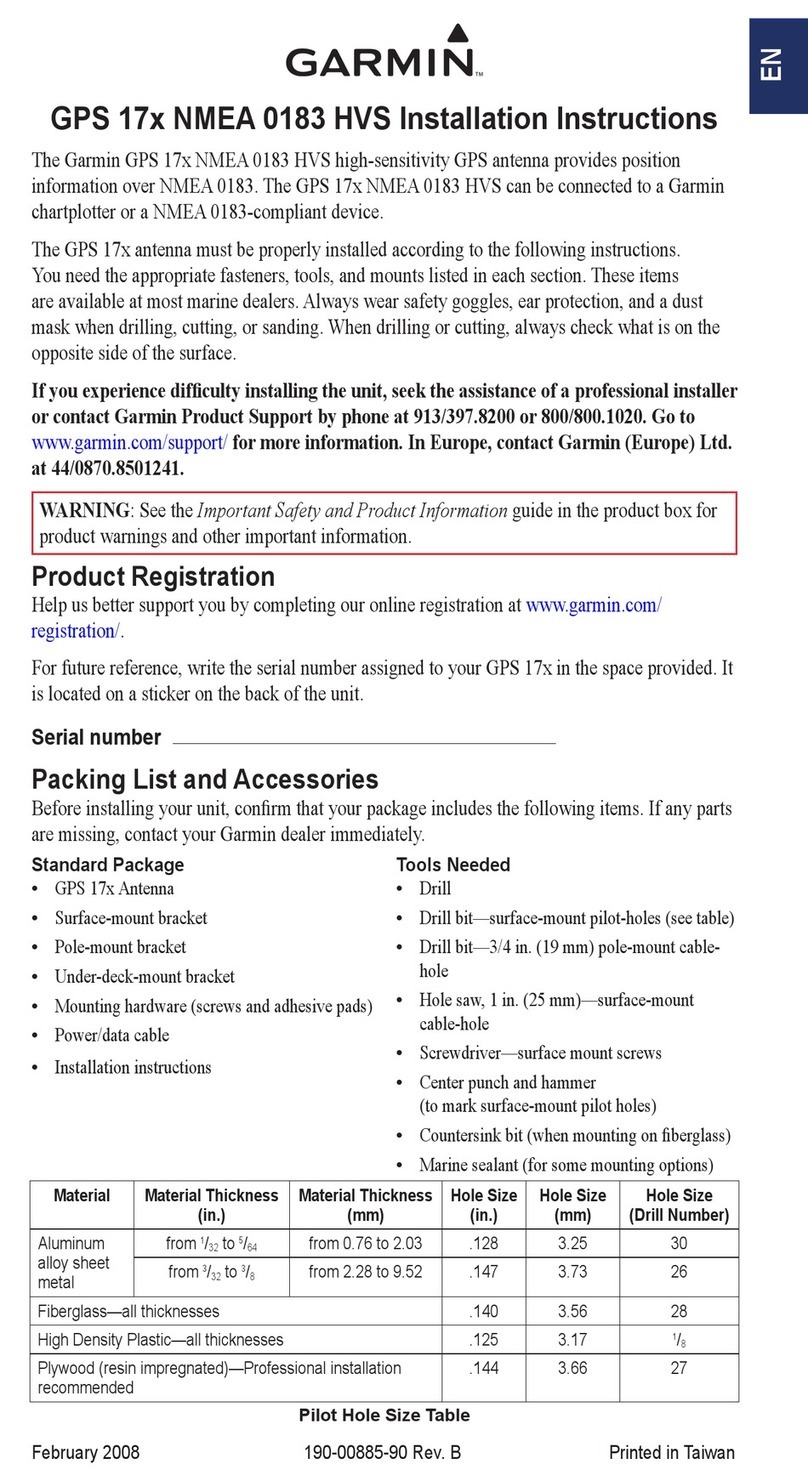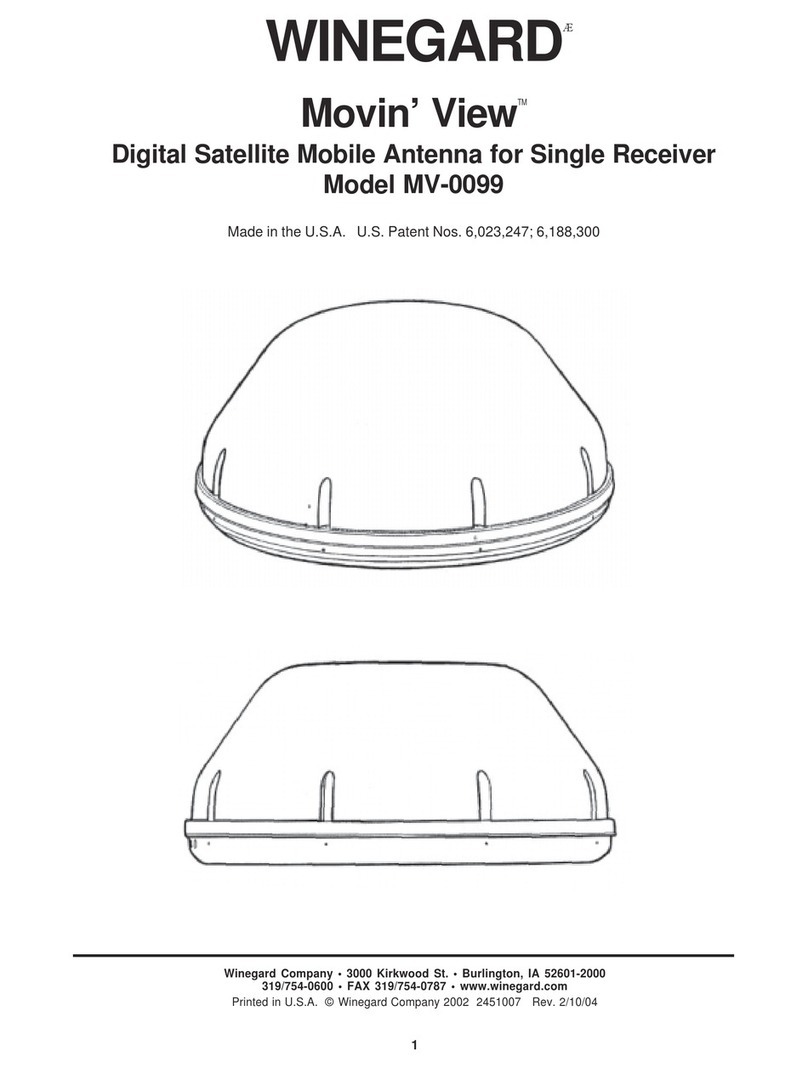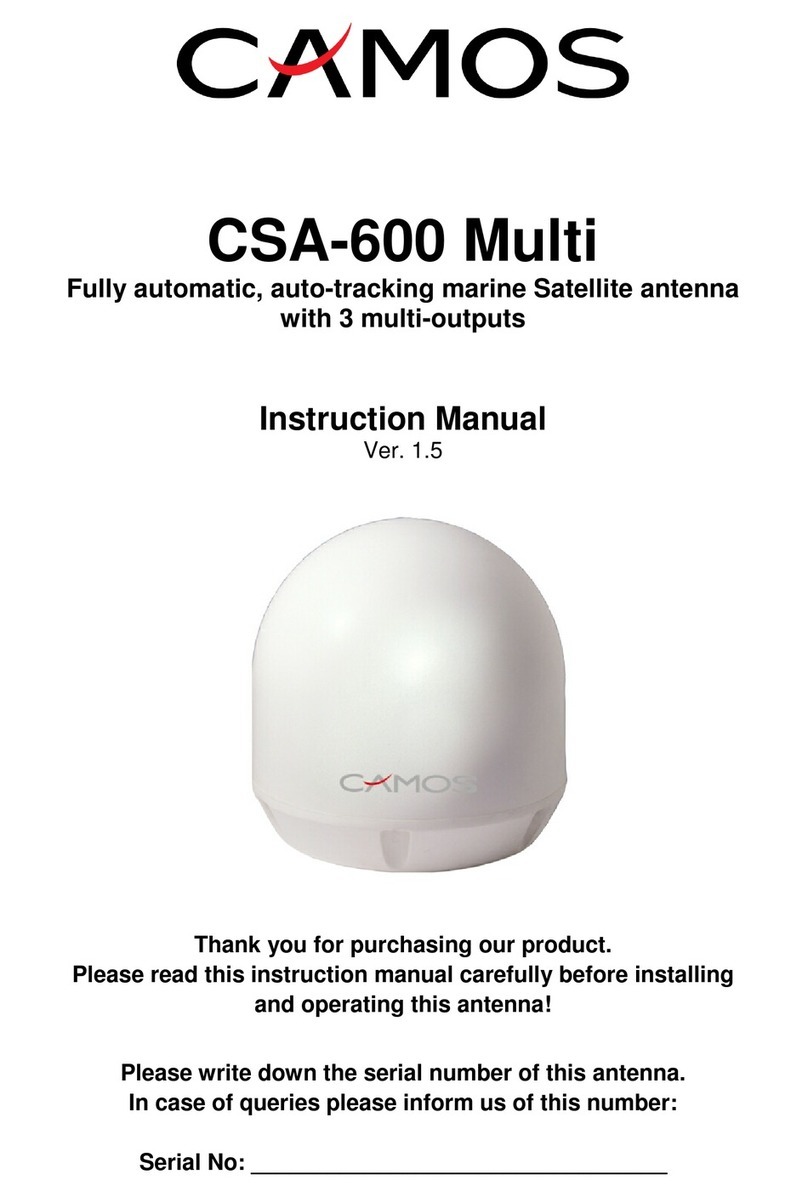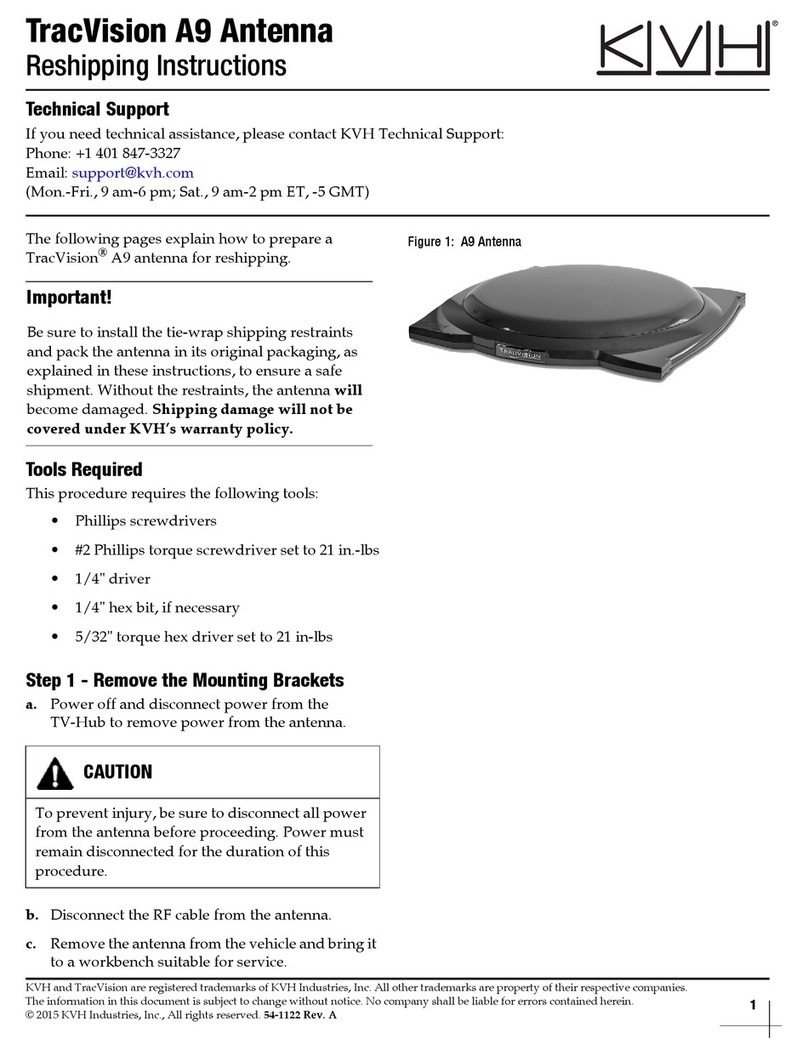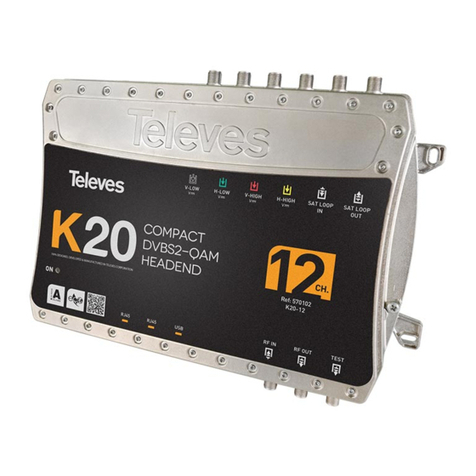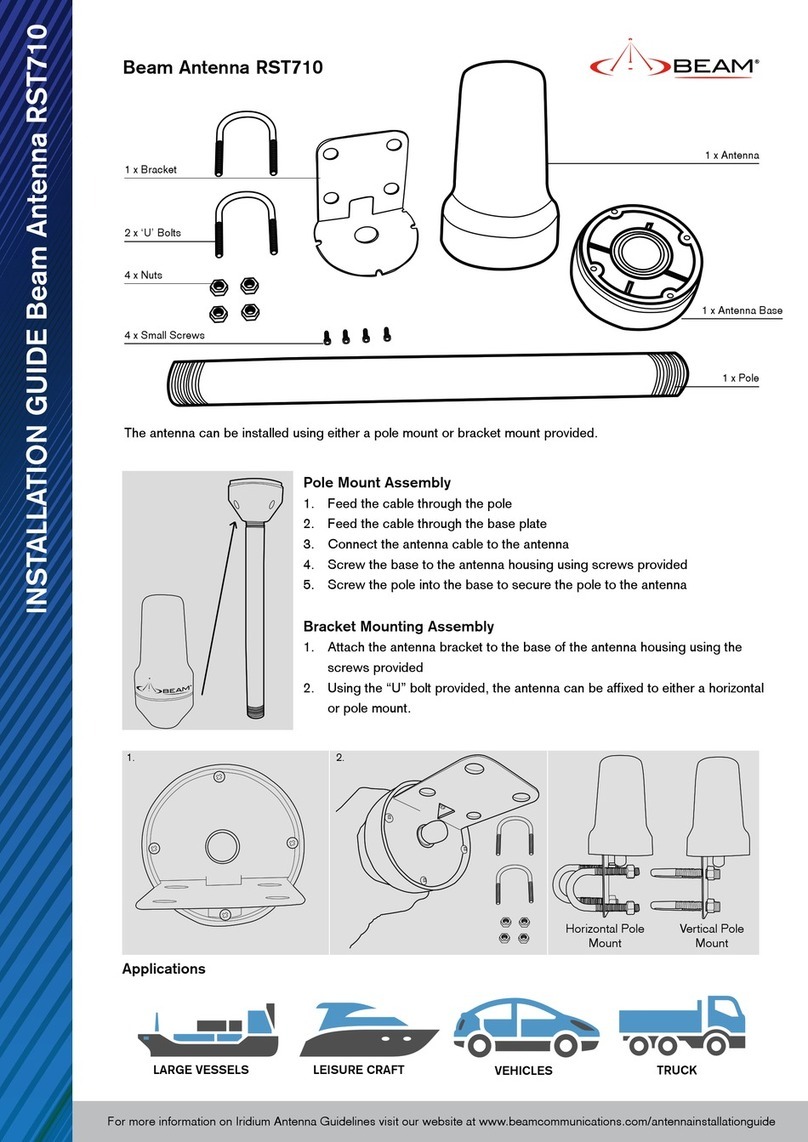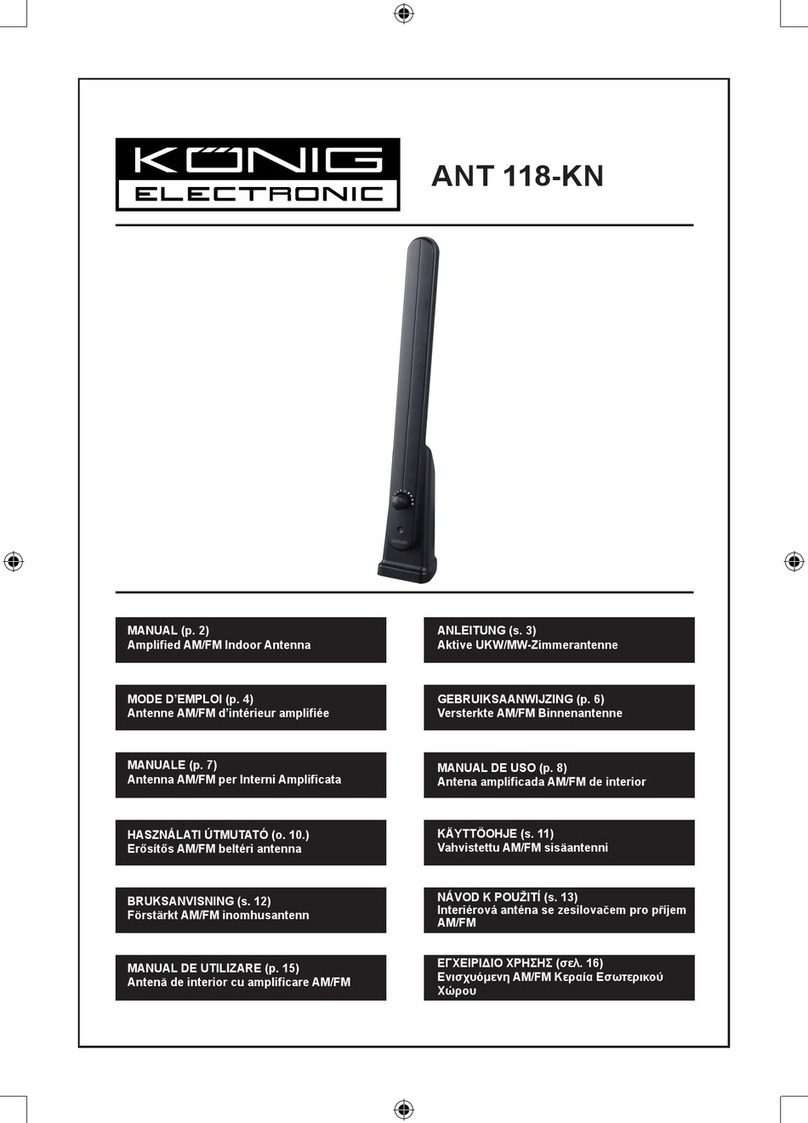
B Copyright SIRIO antenne - Technical Data are subjected to change - Printed in ITALY - Rev. 21/04/2008 - Cod. ID032
ML 145 PL ML 145 N
ML 145
ISTRUZIONI DI TARATURA
A) Foratura: Praticare il foro del diametro richiesto nella posizione
desiderata (consigliato a centro tetto). Togliere la vernice nella
parte interna della carrozzeria per garantire un buon contatto
elettrico di massa.
INSTALLAZIONE
1) Installazione con foratura della carrozzeria:
B) Collegamenti: Posizionare il cavo dell’antenna accorciandolo
in base alle necessità, quindi montare il connettore PL 259
maschio per la connessione all’apparato CB.
E) Consiglio: a montaggio terminato e PRIMA di connettere il
trasmettitore, si consiglia di verificare la continuità elettrica tra la
ghiera del connettore PL 259 e un punto di massa della
carrozzeria.
3) Installazione temporanea con basi magnetiche: seguire
le istruzioni fornite con la base magnetica ricordandosi che si
tratta di un’installazione TEMPORANEA.
N.B.: Si consiglia di testare il cavo lasciandolo scollegato
dall’antenna poiché alcune antenne sono elettricamente in corto
circuito e non è possibile eseguire il test ad installazione
completata.
2) Installazione con attacchi speciali: seguire la stessa
procedura del punto 1.
C) Verifiche elettriche: Assenza di corto circuito tra spina centrale
e ghiera di massa del connettore, continuità elettrica del
conduttore centrale da un’estremità all’altra del cavo, continuità
elettrica calza cavo dalla ghiera lato connettore al contatto di
massa lato connettore d’antenna.
TARATURA
D) Installazione: Completare il montaggio dell’antenna serrando
adeguatamente viti e bulloni.
Le antenne sono pre-tarate in fabbrica pertanto nella maggior
parte dei casi non necessitano di taratura. In caso si renda
A) Recarsi in spazio aperto ad almeno 50 metri o più da oggetti
metallici quali cancelli, lampioni, edifici o tralicci.
B) Collegare un SWR-meter (ROS-metro) tra il connettore
dell’antenna e il trasmettitore CB. Seguire le istruzioni del ROS-
metro per il corretto utilizzo dell’apparato.
C) La seguente procedura si applica per la taratura dei 40 canali
omologati per banda CB compresi nel range di frequenza da CH-
1 = 26.965 MHz a CH-40 = 27.405 MHz con CH-19
=27.185MHz in centro banda.
D) Ripetere l’operazione anche per il CH-19 e il CH-40.
F) Se i valori di SWR sono uguali per CH-1 e CH-40 e il valore
minimo si ha su CH-19, la vostra antenna non necessita di alcuna
taratura.
Selezionare il CH-1 sul trasmettitore CB ed effettuare la misura di
SWR annotandone il valore. Trasmettere sempre per pochi
secondi perché se l’ SWR fosse molto alto si potrebbe
danneggiare il trasmettitore.
E) Se tutti e tre i valori di SWR sono molto alti (maggiori del valore
3) o tendenti a infinito, probabilmente è presente un corto
circuito nel cablaggio oppure l’antenna è guasta. Per evitare di
danneggiare il vostro trasmettitore CB NON utilizzarlo
finché il problema non sarà risolto.
G) Se il valore di SWR è più basso su CH-1 rispetto a CH-40, la
vostra antenna é elettricamente “lunga”, quindi accorciare lo stilo
di circa 10mm alla volta fino ad ottenere gli stessi valori di SWR sia
su CH-1 che su CH-40.
H) Se il valore di SWR è più basso su CH-40 rispetto a CH-1, la
vostra antenna é elettricamente “corta”, quindi allungare lo stilo
sfilandolo di 10mm alla volta fino ad ottenere gli stessi valori di
SWR sia su CH-1 che su CH-40.
necessaria una leggera taratura consigliamo di seguire la
procedura riportata di seguito.
TUNING INSTRUCTIONS
C) The following procedure is used for the tuning of the 40
channels CB-band Radio in the range of:
A) To perform a correct test, move to an open space far from
metal parts such as metal doors, buildings, towers, gates etc. at
minimum 50 metres or more.
E) If all SWR results are very high (more than 3) probably there’s a
short circuit in the cable or your antenna is defective. To avoid
damages to your CB transceiver DO NOT use it until the
problem is rectified.
CH-1 = 27.601 MHz to CH-40 = 27.991 MHz with CH-19 =
27.781 MHz as centre band for UK Frequencies.
CH-1 = 26.965 MHz to CH-40 = 27.405 MHz with CH-19 =
27.185 MHz as centre band for EU Frequencies.
F) If the SWR results are the same on CH-1 and CH-40 and the
lower value is on CH-19, your antenna doesn’t need any tuning.
B) Connect your SWR-meter between the antenna connector
and your CB transceiver (follow the instructions of your SWR-
meter for the correct use to your equipment).
H) If the SWR result on CH-40 is lower than CH-1 your antenna is
electrically TOO SHORT and you need to pull out the radiator as
long as you get the same values on CH-1 as well as CH-40.
G) If the SWR result on CH-1 is lower than CH-40 your antenna is
electrically TOO LONG and you should slightly cut the radiator by
10mm at a time. Avoid cutting too much. As long as you get the
same values on CH-1 as well as CH-40.
Select CH-1 on your CB-transceiver and take an SWR
measurement, writing down the results. Transmit only for a
few seconds because in case the SWR is too high the
transceiver could be damaged.
D) Repeat the procedure for CH-19 and CH-40
REMARKS: As some antennas are in short circuit and it would be
impossible to do the test after the installation, we recommend
you test the cable prior to connecting the antenna.
3) Magnetic mount installation: Follow the instructions
supplied with the magnetic mount.
C) Electrical Tests: Ensure there is no short circuit between the
central pin and the nut of the connector. Ensure there is electrical
continuity of the cable from the central pin (connector side) to
the central contact (antenna side). Ensure there is electrical
continuity of the cable from the nut (connector side) to the
ground (antenna side)
D) Installation: Pay attention to securing all screws and nuts
during the final installation.
TUNING
Most of the antennas are factory tuned and don’t need any extra
tuning, but in case of fine adjustments we recommend to follow
the procedure below:
2) Special mounts installation: Follow the same instructions
of Point 1.
E) Suggestion: After the final installation and BEFORE connecting
your transceiver, we recommend an electrical continuity check
between the nut of the PL259 and the ground of your vehicle.
A) Hole Drilling: Chose the position on your vehicle (centre roof is
recommended) and drill a hole according to the mount diameter.
Please ensure a good electrical ground contact is made.
INSTALLATION
B) Connections: Position the cable in your vehicle shortening its
length according to your needs. Connect the PL259-male to the
cable ready for the connection to the transceiver.
1) Hole mount installation
ML 145 MAG

